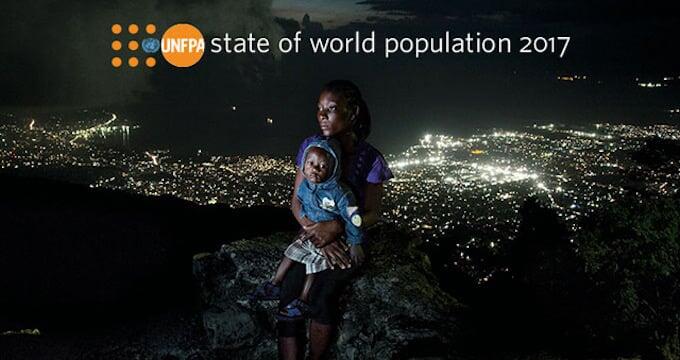Unchecked inequality, failure to protect the rights of poorest women could threaten unrest, undermine peace and world’s development goals, new UNFPA report warns
- Only about half of the world’s women hold paid jobs
- Globally, women earn 77 per cent of what men get
- Three in five women worldwide lack maternity leave, many pay “motherhood penalty”
UNITED NATIONS, New York — Unless inequality is urgently tackled and the the poorest women empowered to make their own decisions about their lives, countries could face unrest and threats to peace and to their development goals, according the The State of World Population 2017, published today by UNFPA, the United Nations Population Fund.
The costs of inequalities, including in sexual and reproductive health and rights, could extend to the entire global community’s goals, adds the new UNFPA report, entitled, “Worlds Apart: Reproductive Health and Rights in an Age of Inequality.”
Failure to provide reproductive health services, including family planning, to the poorest women can weaken economies and sabotage progress towards the number one sustainable development goal, to eliminate poverty.
Economic inequality reinforces and is reinforced by other inequalities, including those in women’s health, where only a privileged few are able to control their fertility, and, as a result, can develop skills, enter the paid labour force and gain economic power.
“Inequality in countries today is not only about the haves and have nots,” UNFPA Executive Director Dr. Natalia Kanem says. “Inequality is increasingly about the cans and cannots. Poor women who lack the means to make their own decisions about family size or who are in poor health because of inadequate reproductive health care dominate the ranks of the cannots.”
In most developing countries, the poorest women have the fewest options for family planning, the least access to antenatal care and are most likely to give birth without the assistance of a doctor or midwife.
Limited access to family planning translates into 89 million unintended pregnancies and 48 million abortions in developing countries annually. This does not only harm women’s health, but also restricts their ability to join or stay in the paid labour force and move towards financial independence, the report argues.
Lack of access to related services, such as affordable child care, also stops women from seeking jobs outside the home. For women who are in the labour force, the absence of paid maternity leave and employers’ discrimination against those who become pregnant amount to a motherhood penalty, forcing many women to choose between a career and parenthood.
“Countries that want to tackle economic inequality can start by tackling other inequalities, such as in reproductive health and rights, and tearing down social, institutional and other obstacles that prevent women from realizing their full potential,” Dr. Kanem says.
The UNFPA report recommends focusing on the furthest behind first, in line with the United Nations blueprint for achieving sustainable development and inclusive societies by 2030. The 2030 Agenda for Sustainable Development has “envisaged a better future, one where we collectively tear down the barriers and correct disparities,” the report states. “Reducing all inequalities needs to be the aim. Some of the most powerful contributions can come from realizing...women’s reproductive rights.”
Reproductive health inequalities in Eastern Europe and Central Asia
Although inequalities are generally less pronounced in Eastern Europe and Central Asia compared to other world regions, there are huge differences both between countries and between various population groups within countries. While some countries in the region have national maternal mortality, ante-natal care or modern contraceptive usage rates similar to those in Western Europe, others still trail far behind. And in virtually all countries, the most vulnerable – the poor, young people, rural populations, minorities – are at higher risk of being left behind.
Related links:
Global report: The State of World Population 2017: Worlds Apart: Reproductive health and rights in an age of inequality
Regional infographic: Reproductive Health Inequalities in Eastern Europe and Central Asia
Regional feature story: Two wheelchairs and a baby stroller: Overcoming barriers to parenthood in Belarus
Regional feature story: Breaking taboos around reproductive health for rural youth in Georgia
Regional video story: Why do many women with disabilities give up on having a family?
at the Regional Office for Eastern Europe and Central Asia:
Jens-Hagen Eschenbaecher, +90 549 748 36 55, eschenbaecher@unfpa.org


